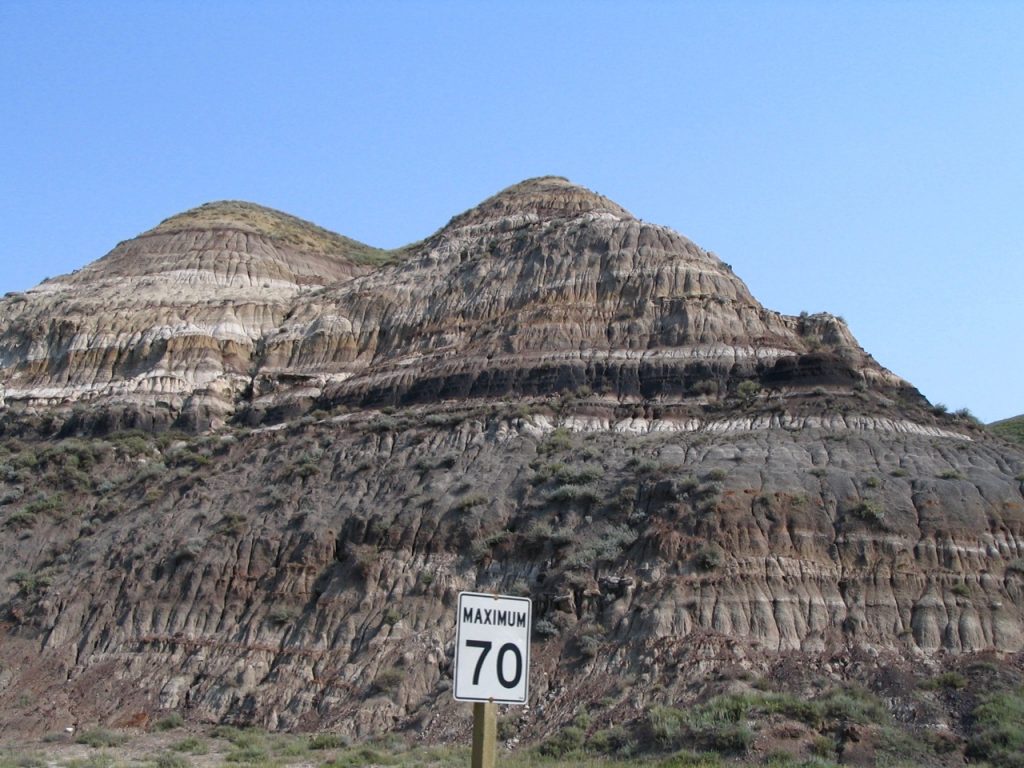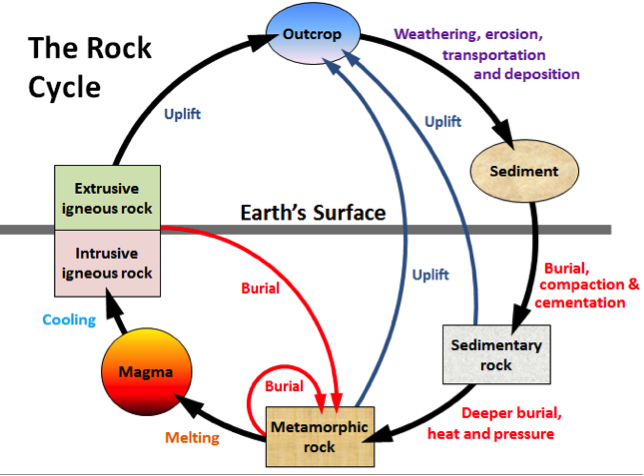Chapter 9. Sedimentary Rocks

Chapter Goals
Complete this chapter so you can:
- Explain the differences between the four kinds of sedimentary rocks: clastic, chemical, biochemical, and organic.
- Describe some of the specific kinds of rocks in each of the four categories, and the depositional environments in which they form.
- Describe the various terrestrial and marine sedimentary depositional environments, and explain how the formation of sedimentary basins is related to plate tectonic processes.
- Apply your understanding of the features of sedimentary rocks, including grain characteristics, sedimentary structures, and fossils, to the interpretation of past depositional environments and climates.
- Explain what groups, formations, and members are in sedimentary rocks, and why such terminology is used.
Earth’s Storybook
All three kinds of rocks—igneous, metamorphic, and sedimentary—can tell us parts of Earth’s story. It is sedimentary rocks, however, that are most akin to a geological storybook. They form one layer at a time, capturing information about conditions at Earth’s surface within each layer. The layers stack one on top of another, forming a chronological sequence like pages in a book.
Sedimentary Rocks Form From the Products of Weathering and Erosion
Weathering and erosion (Chapter 8) are the first two steps in the transformation of pre-existing rocks into sedimentary rocks. The remaining steps in the formation of sedimentary rocks are transportation, deposition, burial, and lithification. These steps are shown on the right-hand side of the rock cycle diagram below (Figure 9.2).

Transportation is the movement of sediments or dissolved ions from the site of erosion to a site of deposition. This can be by wind, flowing water, glacial ice, or mass movement down a slope. Deposition takes place where the conditions change enough so that the sediments can no longer be transported. This could happen if the current slows down.
Burial occurs when sediments are deposited upon existing sediments, covering and compacting them. Lithification is what happens when those compacted sediments become cemented together to form solid sedimentary rock. Lithification occurs at depths of hundreds to thousands of metres within Earth.
Four Types of Sedimentary Rocks
Sedimentary rocks can be divided into four main types: clastic, chemical, biochemical, and organic. Clastic sedimentary rocks are composed mainly of material that is transported as solid fragments (called clasts), and then cemented together by minerals that precipitated from solution. Chemical sedimentary rocks are composed mainly of material that is transported as ions in solution. Biochemical sedimentary rocks also form from ions in solution, but organisms play an important role in converting those ions into calcium carbonate or silica body parts. Organic sedimentary rocks contain large amounts of organic matter, such as from plant leaves and tree bark.
Concept Check: Sedimentary Rock Types

